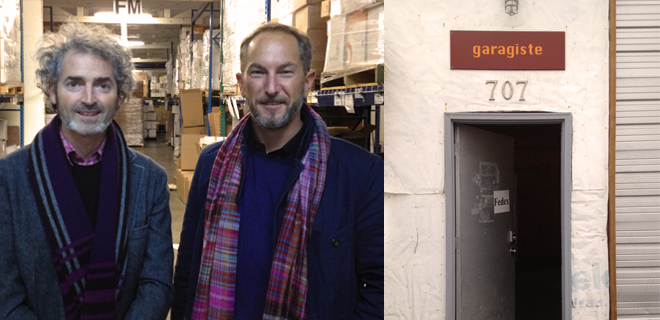
Hard work makes art
In Seattle last week I had the opportunity to meet a minor hero of mine: Jon Rimmerman, founder of Garagiste Wine. Jon’s business is nothing short of amazing, but the main reason I wanted to meet him is simply because of his writing. Jon’s offers (which, by the way, predate by at least a decade the spate of idiotic “daily deal” offers that now plague us) are full of schist, the finest powdery dust, rose-colored light – overflowing with creative energy – and incredibly unique, hand-made, delicious wines.
Like a novel, his writing requires the reader to create an image in the mind without the benefit of illustrations, photos or labels. And like Haruki Murakami and Robert Heinlein, his writing blends the “real” with the magical, combining things we know with things we think are impossible, reminding us in the process that “possible” is only limited by our imagination. Jon’s partner Shira asked me how I know which of their offers I’ll like, and I answered that I sort of scan the email and see what glows. It’s beyond cliché for wine snobs to associate themselves with “art”, but real art gives us a window into the world of someone else’s imagination. Jon’s succeeds with his writing in sharing his imagination, and he also helps the reader to see the art in the hard work behind the wines that he writes about.
Build an “Awesome” button
According to the New York Times piece on Garagiste, the business does $30M a year, all from a single industrial warehouse in Seattle. Much more interesting to those of us in online operations and technology, his entire “e-commerce” system is… email. Yes folks, plain old SMTP. Jon started writing offers in longhand and distributing them by fax. As his list grew, he prodded customers to become early adopters of systems like Prodigy and AOL so that he could reach them without dialing individual fax machines, and that’s just about where he got off the ‘net-tech train. He’s well aware of modern e-commerce systems, and has considered (or at least been pitched) click-to-buy, automated upselling, targeted offers, and every other piece of tech wizardry that most online retailers use, but he made a deliberate decision to focus on the message and let that speak for itself.
In ops, we ridicule (in a nice way) our peers who “still” use fax, email, and Excel in today’s world of integrated systems, automated trading, and big data. All of Garagiste’s offers go out as simple text email, and all of their orders come in as replies to those email offers. While his fulfillment process is certainly not as complicated as that of a major publisher with thousands of ad products across multiple media channels, what matters most is that, for Garagiste, the technology enables the product. In the world of advertising, it still costs 3-4x more to fulfill an order for online advertising than it does for a similarly-sized television ad buy. Our technology is still inhibiting our product. Similarly, Garagiste’s “user interface” is simple, low-friction and very human. Just like Uber is the “Awesome” button for taxi service, Garagiste is my Awesome button for wine. Think about the UI – actually, the many, many, many user interfaces – that marketers deal with. Where is the Awesome button for online marketing?
There’s a reason that “Real Time Bidding” and “Programmatic Premium” remain a vague threat to many people in this industry. It’s not that they fear for their jobs as transcribers of data. It’s that we fear that the process will become even more inhuman. I’m all for automation and integration, but are we really trying to turn online media into Wall Street? Do we really want 70% of the volume on exchanges to be generated by high-speed trading algorithms, fighting each other for micro-arbitrage opportunities? I agree with Mark Cuban that the stock market is no longer serving its original purpose of creating capital for business. Lest we see our industry befall the same fate, we must keep our goal clearly in sight: better media, not automation per se. And better often means simpler.
Not “mobile first” – Community first.
Jon described his business as “an ongoing conversation” between tens of thousands of artisan wine makers and appreciators. Some of whom are “people who have read my offers for going on 15 years, and haven’t ever made a purchase,” and others are customs agents who’ve probably never read a single word that he’s written. After talking with him for almost two hours, I came to think of his business as using the palate to expand the mind. We were talking about one of his offers that I had particularly enjoyed (an ethereal Herve Souhaut Syrah), and he told me that “that’s one of those wines that people just have to taste, to expand their horizons. It’s great to see someone go from saying ‘this is horrible’ to ‘this is amazing’ in the same bottle, as their understanding of what wine is and how it can taste changes.”
Jon’s business would never have succeeded if he had focused on building a fancy web interface and a slick mobile app. You know what’s great about email? Email already has a mobile-friendly interface. I’m not saying that email is the solution for everyone, and I’d bet that Jon has more up his sleeve in terms of engaging with his community, but email sure ain’t dead yet, and there’s a lot to be said for just hitting “Reply” to engage. Plug that into your last-click attribution model.